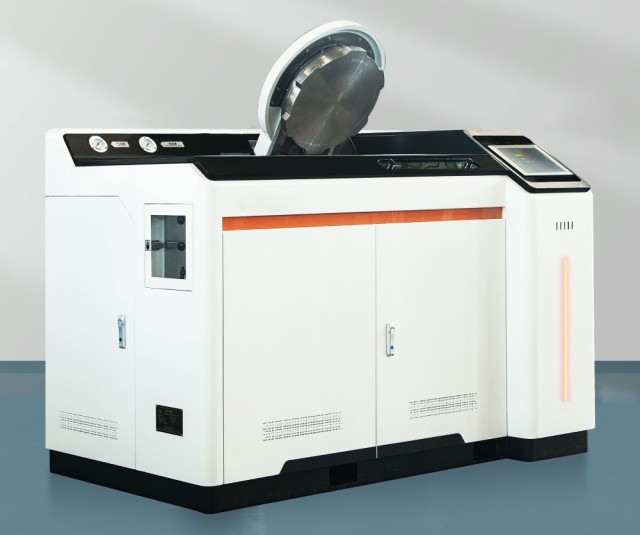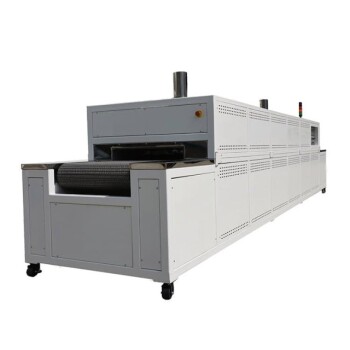Introduction to Pressurized Sintering Methods
Types of Pressurized Sintering
Pressurized sintering encompasses three primary methods: hot isostatic pressure sintering, hot pressure sintering, and gas pressure sintering. These techniques have gained prominence as advancements in material science have led to the development and commercialization of new materials.
-
Hot Isostatic Pressure Sintering (HIP): This method involves applying isostatic pressure at elevated temperatures to achieve uniform densification of materials. HIP is particularly effective for complex shapes and materials that require high density and strength.
-
Hot Pressure Sintering (HPS): In this process, simultaneous application of heat and uniaxial pressure is used to enhance the sintering process. HPS is known for its ability to produce materials with fine microstructures and high mechanical properties.
-
Gas Pressure Sintering (GPS): This technique employs a controlled atmosphere to apply pressure during the sintering process. GPS is beneficial for materials that require specific gas environments to achieve optimal densification and property enhancement.
The increasing adoption of these pressurized sintering methods is driven by the need for materials with superior properties and the ability to process complex geometries. However, the high cost and specialized equipment required for HIP and GPS limit their widespread use, particularly in research institutions and smaller manufacturers. Consequently, the development of more accessible sintering techniques, such as vacuum hot pressing, holds significant practical value. Research and production practices have demonstrated that the densification process in hot pressed materials involves mechanisms like plastic flow, viscous flow, diffusion, and creep, with plastic and viscous flow often playing a crucial role in rapid densification and microstructure control.
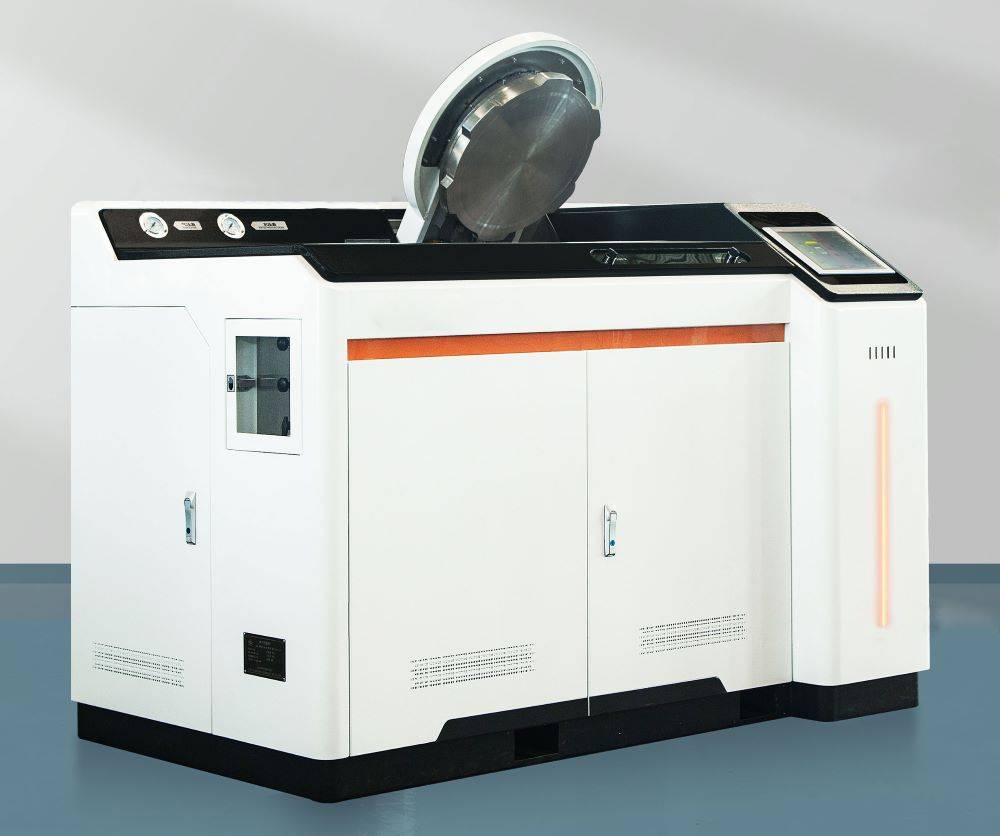
Advantages of Hot Pressing Method
The hot pressing method stands out due to several key benefits that make it a preferred choice in material processing. One of its most significant advantages is the minimal investment in equipment required. Unlike other methods that demand expensive machinery, hot pressing can be achieved with relatively simple and cost-effective setups.
Moreover, hot pressing ensures enhanced temperature field uniformity. By simultaneously applying heat and pressure, this method facilitates a more controlled and uniform distribution of temperature across the material. This uniformity is crucial for achieving consistent properties and reducing the likelihood of defects.
Energy efficiency is another notable advantage of the hot pressing method. The simultaneous application of heat and pressure not only reduces the sintering temperature but also shortens the sintering time. This dual effect leads to lower energy consumption, making the process both environmentally friendly and cost-effective.
Furthermore, the hot pressing method excels in the preparation of large-diameter materials. The ability to handle large-scale components is a significant advantage, particularly in industries that require extensive materials with uniform properties. This capability is attributed to the method's ability to manage plastic flow and densification effectively, even under high pressures and temperatures.
In summary, the hot pressing method offers a blend of economic, operational, and performance benefits that make it a versatile and efficient choice for material processing.
Working Principle of Vacuum Hot Press Sintering
Working Steps and Sintering Process
The sintering process is a meticulously controlled series of steps, each crucial for achieving the desired quality and performance of the final ceramic product. Initially, the ceramic powder is meticulously charged into the furnace, ensuring an even distribution to facilitate uniform sintering. Following this, the furnace is evacuated to create a vacuum environment, which helps in removing any residual gases and impurities, thereby enhancing the purity and integrity of the final product.
Next, the heating phase begins, where the temperature is carefully regulated to induce particle bonding without causing complete melting. This controlled heating process is essential for the diffusion of particles, leading to the formation of necks and subsequent densification. The furnace meticulously monitors and adjusts parameters such as temperature, pressure, and atmosphere to ensure optimal conditions for sintering.
Once the desired densification is achieved, the pressurization step is initiated. This involves applying pressure to the heated material, further enhancing particle bonding and reducing porosity. The combination of heat and pressure is pivotal in achieving a low-porosity, high-density final product.
The final stage of the process is cooling, where the sintered material is allowed to solidify into a rigid and cohesive structure. This cooling phase is also carefully controlled to prevent any thermal stresses that could compromise the integrity of the product. The entire process, from charging the powder to cooling the final product, is orchestrated with precision to ensure the production of high-quality ceramic materials.
Detailed Sintering Process
The sintering process is a meticulously controlled sequence of stages, each contributing to the final densification and structural integrity of the material. The process begins with the initial stage, where raw materials, typically in powder form, are compacted into a specific shape. This compaction step is crucial for ensuring uniformity and eliminating voids within the material.
In the middle stage, the compacted material undergoes controlled heating within a sintering furnace. The temperature is precisely regulated to facilitate particle bonding without causing complete melting. During this heating phase, particle diffusion occurs, leading to the formation of necks between particles and subsequent densification. This stage is characterized by significant grain boundary expansion and the reduction of porosity.
The late stage involves the cooling of the sintered product. This cooling process allows the material to solidify into a rigid and cohesive structure, achieving high density and mechanical strength. The entire sintering process, from initial compaction to final cooling, typically lasts only seconds to a few hours, depending on the specific requirements and materials being processed.
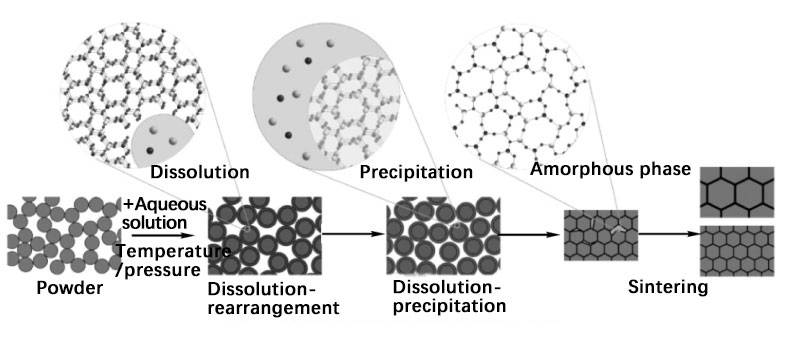
The sintering process can be summarized in the following steps:
- Composition and Mixing: The required primary materials and coupling agents are added and thoroughly mixed.
- Compression: The powder is pressed into the desired shape, ensuring uniformity and minimal voids.
- Heating: The compacted material is heated to facilitate particle bonding and densification.
- Cooling: The sintered product is cooled to solidify and achieve the final structural integrity.
This multi-step process is essential for achieving the high-density, high-performance materials required in various industrial applications, particularly in advanced ceramics and refractory metals.
Classification and Composition of Vacuum Hot Press Sintering Furnace
Classification Based on Use Environment
The classification of hot pressing sintering furnaces is primarily determined by their operational environments, which significantly influence their functionalities and applications. These furnaces can be broadly categorized into three main types: atmospheric, controlled atmosphere, and vacuum hot pressing sintering furnaces.
-
Atmospheric Hot Pressing Sintering Furnaces: These furnaces operate under normal atmospheric conditions, making them suitable for processes that do not require an inert or controlled environment. They are often used for materials that are stable under ambient air conditions, such as certain types of ceramics and metals.
-
Controlled Atmosphere Hot Pressing Sintering Furnaces: In these furnaces, the environment inside the chamber is precisely controlled to include specific gases like nitrogen, hydrogen, or argon. This controlled atmosphere is crucial for preventing oxidation and ensuring the integrity of reactive materials during the sintering process. This type of furnace is particularly beneficial for sintering materials that are highly reactive with oxygen, such as titanium alloys or certain advanced ceramics.
-
Vacuum Hot Pressing Sintering Furnaces: Operating under vacuum conditions, these furnaces are designed to remove all gases from the sintering chamber, creating an ultra-clean environment. This is essential for processes involving highly reactive or sensitive materials that can degrade under atmospheric or controlled atmosphere conditions. Vacuum furnaces are extensively used in the sintering of high-performance ceramics and metals, where the absence of oxygen and other gases is critical for achieving superior material properties.
Each type of furnace offers unique advantages and is tailored to meet specific requirements in material science and engineering, ensuring optimal conditions for various sintering processes.
Classification Based on Temperature Range
The vacuum hot press sintering furnace is categorized into three distinct temperature ranges, each tailored to specific material processing needs:
-
Room Temperature to 800°C: This range is ideal for applications requiring moderate heating, such as preliminary material conditioning and low-temperature sintering processes. The heating elements in this range are typically composed of materials like nichrome wires or molybdenum disilicide, offering reliable performance at lower temperatures.
-
Room Temperature to 1600°C: This intermediate range is suited for a broader spectrum of materials, including advanced ceramics and some metal alloys. The heating elements here are often made from molybdenum disilicide or tungsten, providing robust and efficient heating capabilities. Insulation materials, such as high-purity alumina, ensure effective thermal management and energy efficiency.
-
Room Temperature to 2400°C: The highest temperature range is designed for demanding applications, such as the sintering of ultra-high temperature ceramics and refractory metals. The heating elements in this category are usually made from tungsten or rhenium, known for their exceptional high-temperature stability. Insulation materials, including zirconia and graphite, are selected for their superior thermal resistance and durability at extreme temperatures.
Each temperature range employs specialized heating elements and insulation materials to optimize performance and ensure the quality of the sintered products.
Main Components of the Furnace
The vacuum hot pressing furnace is a sophisticated piece of equipment designed to handle high-temperature and high-pressure processes, primarily for sintering advanced materials. Its core components include:
-
Furnace Body and Door: The furnace body is the main structure that houses the sintering process. It is typically made from high-strength, heat-resistant materials to withstand the extreme conditions. The furnace door, often sealed with advanced gaskets, ensures that the internal environment remains stable and free from contaminants.
-
Heating and Insulation Systems: The heating elements are crucial for generating the necessary heat. These elements are often made of resistance wires or ceramic materials, capable of reaching temperatures up to 2400°C. Surrounding these elements is a layer of insulation, typically composed of refractory materials, which helps maintain a uniform temperature within the furnace.
-
Pressurization System: This system applies the necessary pressure to the materials being sintered. It ensures that the particles are compacted effectively, leading to high-density final products. The pressurization system is often hydraulic or pneumatic, capable of precise control over the pressure applied.
-
Vacuum System: The vacuum system is essential for creating an environment free from atmospheric gases, which can otherwise react with the materials being processed. This system includes pumps and seals designed to achieve and maintain the required vacuum levels.
-
Water Cooling System: After the sintering process, the furnace components, particularly the heating elements, need to be cooled rapidly to prevent damage. The water cooling system circulates water through cooling coils or jackets to dissipate heat efficiently.
-
Control System: The control system is the brain of the furnace, regulating parameters such as temperature, pressure, and vacuum levels. It often includes advanced sensors like thermocouples for temperature measurement and digital controllers for precise adjustments. This system ensures that the sintering process is conducted under optimal conditions, leading to high-quality final products.
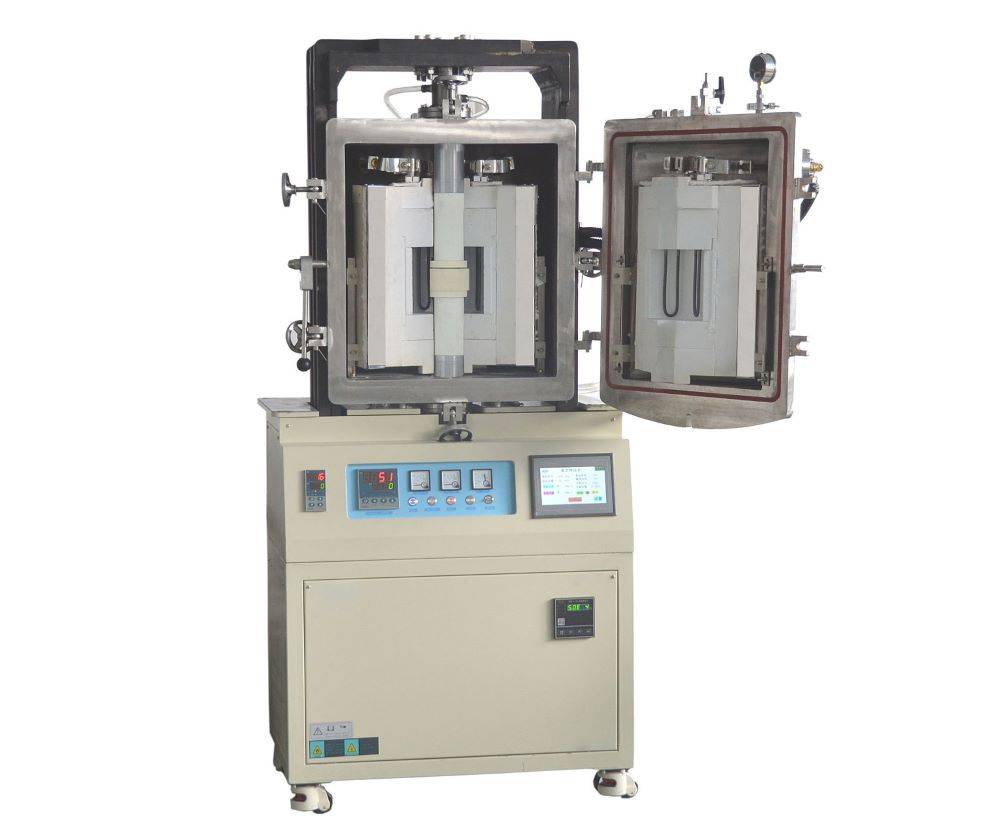
Applications of Vacuum Hot Press Sintering Furnace
Advanced Ceramics Hot Press Sintering
The vacuum hot press sintering furnace is a specialized tool designed for the densification of advanced ceramics, such as boron carbide, which necessitates both high temperatures and pressure to achieve superior density and enhanced material properties. This process is essential for creating ceramics with exceptional mechanical, thermal, and electrical characteristics, making them ideal for various high-performance applications.
Key Steps in the Sintering Process
- Charging: Ceramic powder is meticulously loaded into the furnace.
- Vacuuming: The furnace is evacuated to a vacuum state to eliminate gases and impurities.
- Heating: The heater raises the furnace temperature to the required level, melting the ceramic powder.
- Pressurization: At elevated temperatures, pressure is applied to the ceramic powder, facilitating its fusion into a dense solid structure.
- Cooling: Following sintering, the furnace is cooled gradually to bring the ceramic material back to room temperature.
Advantages of Hot Press Sintering
- Equipment Investment: The hot pressing method requires relatively low investment compared to other sintering techniques.
- Temperature Field Uniformity: The pressure-bearing material in the hot press can be made thinner, enhancing the uniformity of the workpiece's temperature field.
- Energy Efficiency: This method significantly reduces energy consumption, contributing to cost savings and environmental benefits.
- Material Preparation: It enables the preparation of large-diameter materials, broadening its application scope.
- Control and Monitoring: Integration with IT technology allows for precise measurement and control of the sintering process, ensuring the quality and performance of the final ceramic products.
By meticulously controlling parameters such as temperature, pressure, and atmosphere, the vacuum hot press sintering furnace ensures the production of high-quality advanced ceramics with optimized properties.
Hot Press Sintering of Target Materials
The vacuum hot press sintering furnace plays a crucial role in the preparation of refractory metal and inorganic non-metallic sputtering targets. This process leverages powder metallurgy to achieve a uniform composition and a fine crystal structure, which are essential for optimal performance in various applications. By employing vacuum hot pressing, the furnace ensures that the ceramic powders are sintered to near-net-shape and high density, overcoming the limitations of traditional sintering methods that often result in incomplete densification.
| Aspect | Description |
|---|---|
| Technique | Vacuum Hot Pressing |
| Materials | Refractory metals, inorganic non-metallic powders |
| Objective | Uniform composition, fine crystal structure |
| Advantages | Near-net-shape, high density |
Despite its advantages, vacuum hot pressing is not without its challenges. The primary limitations include the relatively small size of the targets that can be produced, typically up to 400 × 300mm, due to the constraints of the hot pressing equipment and the mold size. Additionally, the method demands high-purity, high-strength graphite molds, which can be costly and require specialized handling. Furthermore, the equipment itself often needs to be imported, making it less suitable for continuous industrial production, which can lead to lower production efficiency and higher costs.
Another critical issue is the poor uniformity of the target grain, which can affect the overall quality and performance of the final product. Addressing these challenges while maintaining the benefits of vacuum hot pressing remains a key area of research and development in the field of materials science.
Related Products
- Vacuum Heat Treat and Pressure Sintering Furnace for High Temperature Applications
- Vacuum Hot Press Furnace Machine Heated Vacuum Press
- Vacuum Hot Press Furnace Heated Vacuum Press Machine Tube Furnace
- 600T Vacuum Induction Hot Press Furnace for Heat Treat and Sintering
- Vacuum Heat Treat and Sintering Furnace with 9MPa Air Pressure
Related Articles
- Vacuum Hot Press Furnace: A Comprehensive Guide
- The Ultimate Guide to Vacuum Pressure Sintering Furnace: Benefits, Applications, and Working Principle
- How Vacuum Induction Melting (VIM) Transforms High-Performance Alloy Production
- Exploring the Advanced Capabilities of Spark Plasma Sintering (SPS) Furnaces
- Comprehensive Guide to Spark Plasma Sintering Furnaces: Applications, Features, and Benefits
